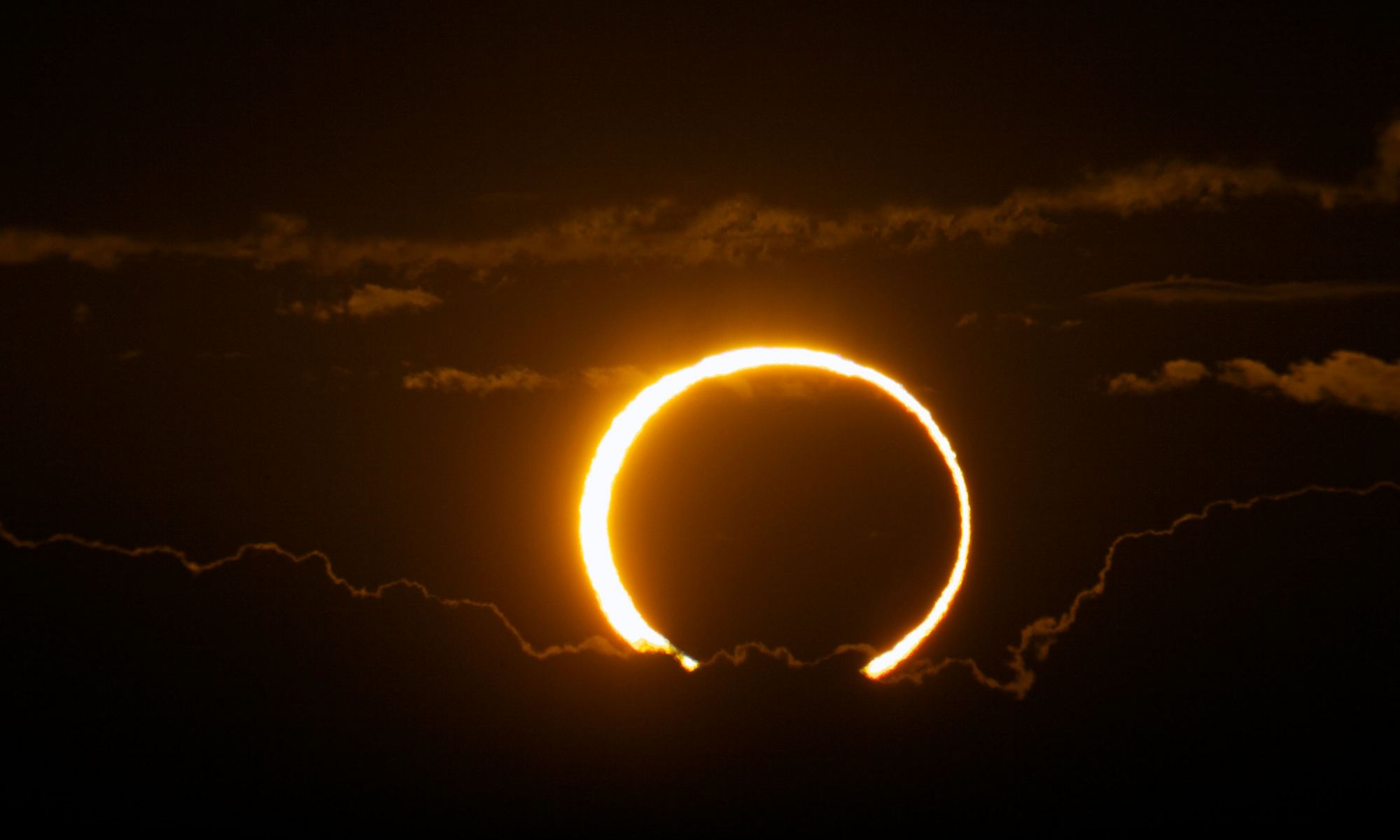The first solar eclipse of 2023 will span Australia and southeast Asia into the Pacific Ocean region.
Mark your calendars. The first eclipse season of 2023 is about to begin on Thursday, April, 20th, with a rare hybrid annular-total solar eclipse.
A Solar Eclipse Primer
Eclipses occur when the Moon passes between the Earth and the Sun, casting its shadow across the surface of the planet. The Moon’s path is inclined five degrees relative to the ecliptic plane, and misses the Sun on most passes. Otherwise, we’d see two eclipses—one lunar and one solar—per month. For an eclipse season to occur, New and Full Moon need to fall very near an intersection node of the Moon’s orbit and the ecliptic. This happens about twice a year.
Total eclipses occur when the Moon completely covers the Sun, plunging those standing in the shadow of the Moon into an eerie darkness and revealing the pearly white solar corona. This is the kind of eclipse most folks will get on a plane and head to an exotic location for. Though we often marvel at how the Moon seems to be a great fit versus the Sun as seen from the Earth, this isn’t always the case. If New Moon is headed towards apogee and the Sun is a few months within perihelion, the inner umbral shadow fails to reach the surface of the Earth, and an annular eclipse occurs. Observers are then treated to a brilliant ‘ring of fire’ eclipse.

A Bizarre Hybrid Solar Eclipse
But something stranger still happens on April 20th. The Moon’s umbral shadow barely brushes the Earth on one part of the track, only to liftoff again on the other. This is the hybrid portion of the eclipse, which transitions from a broken annular, to totality, then back to annular again.

The 49-kilometer wide path touches down at sunrise over the Indian Ocean. The eclipse only brushes land briefly at three points. First landfall occurs over the extreme northwestern tip of Australia along the Ningaloo Coast and the tiny town of Exmouth. The shadow then crosses the Timor Sea and touches the eastern tip of the island nation of East Timor near the capital of Dili, and then crosses a scattering of Indonesian islands including Kisar, the Schouten Islands and Western New Guinea.

Maximum duration for totality is only 1 minute and 16 seconds, just south of the Indonesian island of East Timor in the Timor Sea.
A Rare (and Remote) Event
How rare is a hybrid eclipse? Well, there are only seven hybrid eclipses in the 21st century, or 3.1% of solar eclipses overall. Annulars are actually more common than totals in the current epoch, and will continue to become even more so over the next few hundred million years as the Moon slowly recedes from the Earth, until all central solar eclipses are elusively annular.
“The April 20, 2023 hybrid solar eclipse is notable in that it is longer in duration than most annular-totals, and is the longest until October 17, 2172,” Eclipse-chaser and researcher Michael Zeiler told Universe Today. “There is some true annularity at the end of the central path just before sunset, but with a brief duration of just over 4 seconds of annularity. This eclipse will have a total of about 2920-kilometers of broken annularity.”
Solar eclipses are more common than you’d think throughout the solar system. Rovers on Mars routinely witness misshapen annular eclipses courtesy of the small Martian moons Deimos and Phobos. Also, head to the surface of Jupiter’s major moons, and you’d see total solar eclipses featuring a sharp fit similar to Earth’s during mutual transit season.
Viewing the Eclipse
Though few folks live along the central path of next week’s eclipse, millions across Australia and southeast Asia will be treated to partial views from around the path. You’ll need to practice proper eclipse safety during all partial phases on the eclipse, and use approved ISO 12312-2 glasses for viewing.
Partial phases extend from Australia through southeast Asia. Here are the circumstances for select cities in the region:

Singapore – 3:55 UT-15.6% maximum obscuration, with the Sun at 70.5 degrees altitude.
Manila – 4:55 UT-23.7% maximum obscuration, with the Sun at 74.5 degrees altitude.
Darwin – 4:22 UT-80.7% maximum obscuration, with the Sun at 61 degrees altitude.
Jakarta – 3:45 UT-39% maximum obscuration, with the Sun at 66 degrees altitude.

Eclipse Season…and Beyond
This first eclipse season is book-ended with a subtle penumbral lunar eclipse on May 5th favoring Africa, Asia and Australia. This is also the last total solar eclipse until the big one. We’re talking about the Great North American total solar eclipse spanning Mexico, the United States and Canada in just under a year on April 8th, 2024.
Don’t miss the first eclipse of the year. We’ll note if any live webcasts for the April 20th eclipse turn up. Don’t miss the show, either from the hybrid annular-total path, or from the partial stage region.

